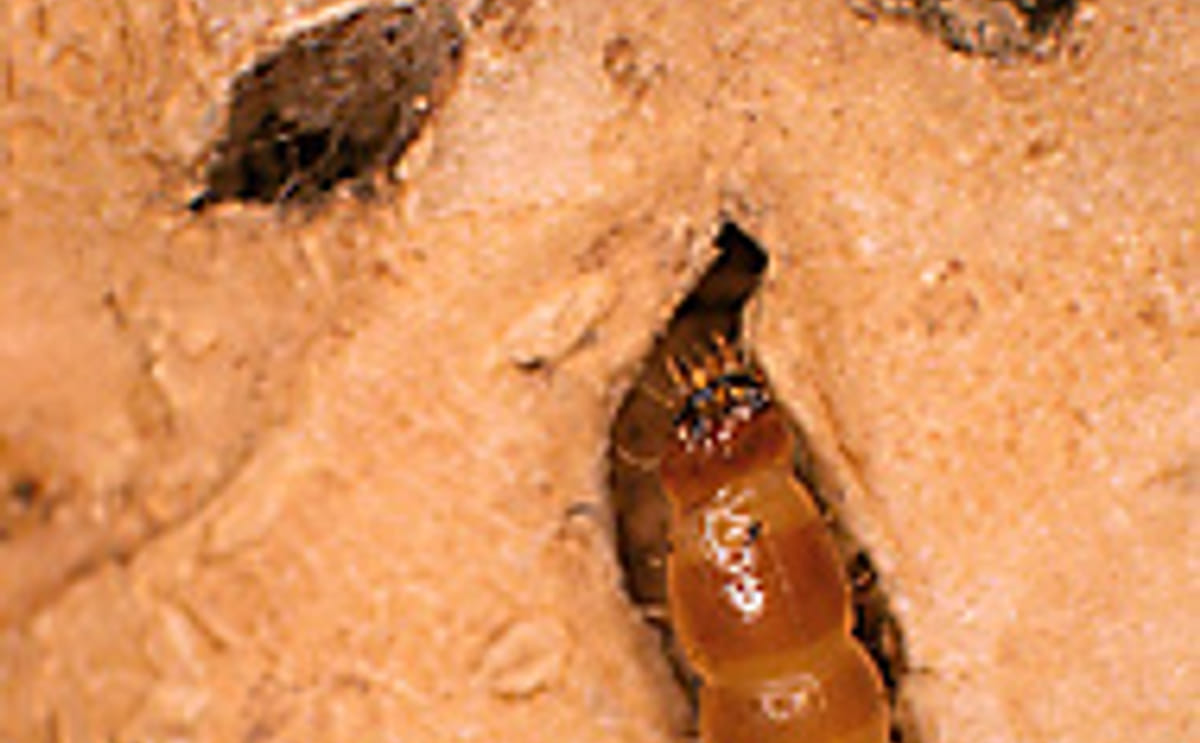Wireworm feeding damage is easy to spot, says Rich Novy, an Agricultural Research Service plant geneticist seeking to shore up America’s $3.3 billion potato crop. The damage resembles a nail hole that has been punched into the spud, pitting its surface and making it less appealing for use in fresh-pack or processing markets.
Although organophosphate- and carbamate-based insecticides are available for use against wireworms on potato, the continued registration of some of these insecticides is uncertain, say Novy, who is in ARS’s Small Grains and Potato Germplasm Research Unit in Aberdeen, Idaho. Plus, the chemicals don’t always eliminate the slender, brownish-orange pests, which as larvae can survive beneath the soil for as long as 5 years before emerging as adult click beetles.
Over the last several years, Novy, ARS plant pathologist Jonathan Whitworth, and former University of Idaho associate professor Juan Alvarez have looked for a solution to the problem in the form of genetic resistance. In particular, they’ve focused attention on two wild relatives of cultivated potato obtained from Chile and Bolivia: Solanum berthaultii and S. etuberosum. Taking their cue from previous studies showing that the wild potatoes are resistant to Colorado potato beetles and green peach aphids, two disparate pests, the researchers decided to pit the plants against hungry wireworms as well.
To do this, the team crossed germplasm derived from the wild potatoes with a cultivated variety and then selected 15 top-performing plants from 3 generations of progeny. The researchers’ next step was to plant the progeny lines, called “breeding clones,” in wireworm-infested field plots in southern Idaho and compare the feeding damage they sustained to that of flanking rows of Russet Burbank potatoes treated with or without an insecticide commonly used for controlling wireworm. As the researchers had hoped, the resistant clones fared as well as—and sometimes better than—the insecticide-treated Russet Burbank potatoes.
At this time, the mechanism of resistance to wireworm has not been determined, but it may be related to glycoalkaloids. These naturally occurring chemical compounds in potato tubers are known to deter some insect pests. Total concentrations of glycoalkaloids in many of the resistant clones are at levels suitable for human consumption, which may open the door to their use in the development of wireworm-resistant commercial varieties.
The team has submitted a paper on the research to the Journal of Economic Entomology
- Nieuws
- Aardappelketen
- New Potato Varieties...
New Potato Varieties Withstand Destructive Wireworms
Inloggen or Inschrijven to use this flag.

september 13, 2011
Bron
Like to receive news like this by email? Join and Subscribe!
NEW! Join Our BlueSky Channel for regular updates!
Related Topics:
Uitgelichte Bedrijven
Related News

januari 07, 2025
Specialty Crops Secure USD 650 Million in Additional Funding for USDA Initiative

januari 07, 2025
Despite good harvest of potatoes, Kazakhstan limits export to Russia and Belarus

januari 06, 2025
Potato sellers in West Bengal upset over restrictions on sale
Latest News
Sponsored Content
Sponsored Content
Sponsored Content
Sponsored Content
Waar
Sponsored Content





